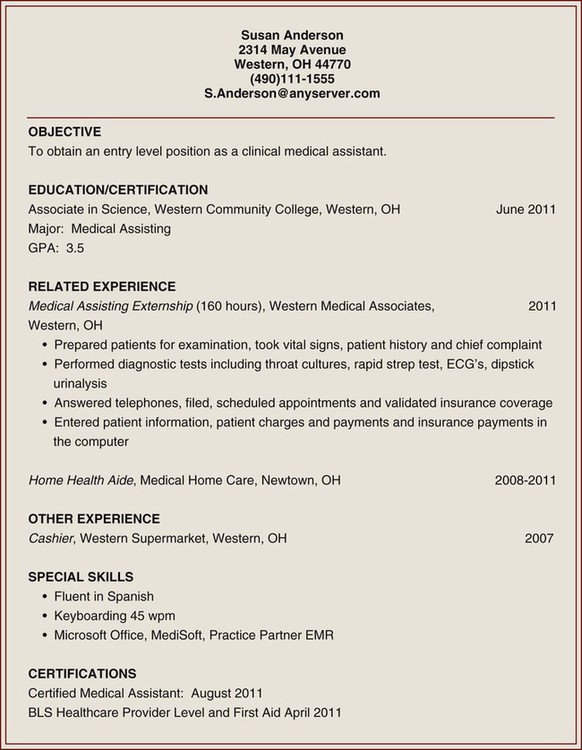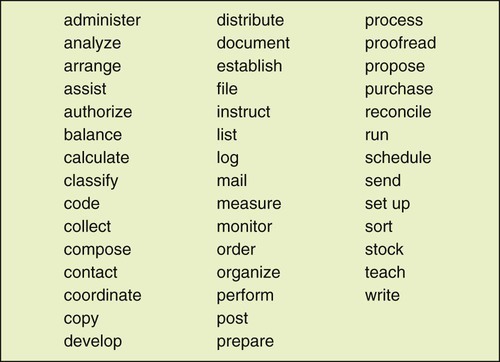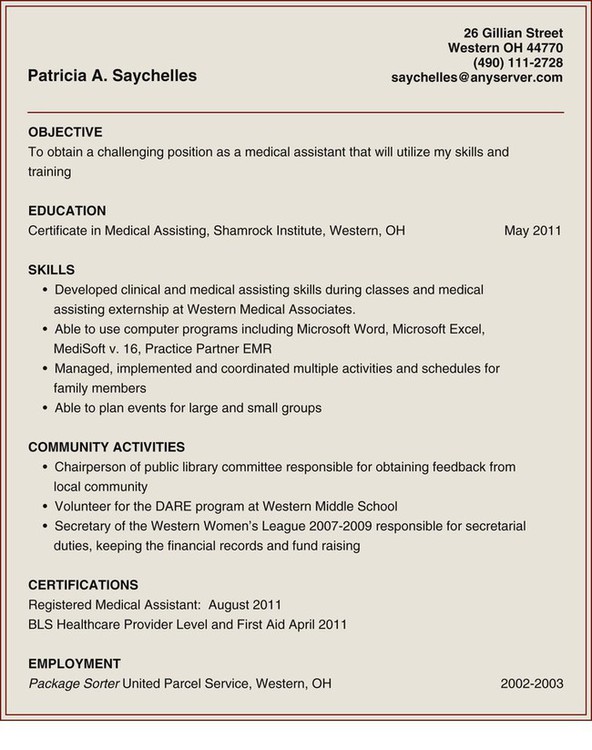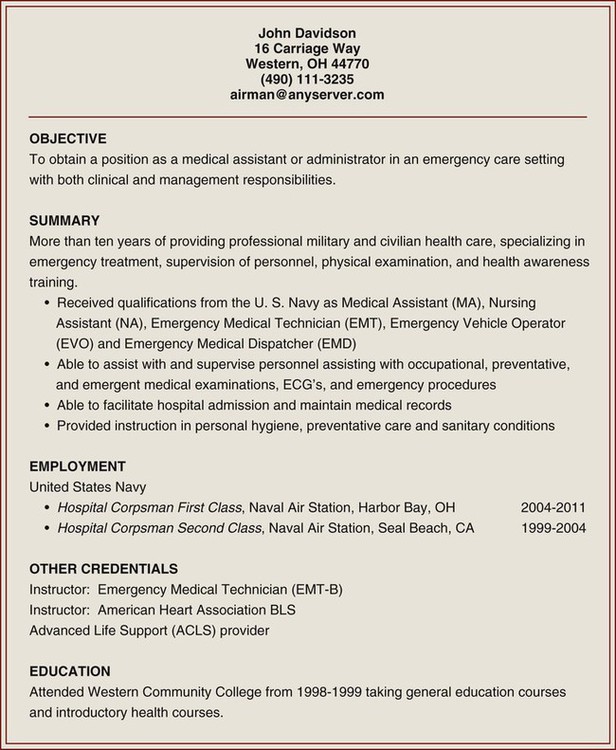1. Describe the process for locating potential employers when looking for a job. 2. Discuss the steps in preparing a résumé. 3. Describe how to write a cover letter. 4. Differentiate between information placed on a résumé and information required on an employment application. 5. Explain how to provide potential employers with a résumé by mail, using a fax, or using Internet resources. 6. Prepare to answer questions commonly asked in a job interview. 7. Describe measures to prevent job burnout. 8. Identify two professional organizations to which a medical assistant may belong. 9. Identify benefits of joining a professional organization. 10. Discuss why lifelong learning is vital for a medical assistant after graduation. • Do I want to work full-time or part-time? • In what area of the country or region do I want to work? • Do I want to work in a city? In the suburbs? In the country? • What are my particular strengths and weaknesses? • Am I interested in working in a particular medical specialty? • Do I have a preference about the size of the organization where I would be happy? • Do I want to specialize in either clinical or administrative duties, or do I want to do both? The basic pieces of information needed for a résumé are personal demographics, objective, education, experience, skills, credentials, and references. A number of computer programs are available for preparing résumés. If a computer program is used, the medical assistant should be sure to personalize the résumé. It is also helpful to use some sample résumés as guides (Figures 50-1, 50-2, and 50-3). Other samples may be available from the placement office of the graduate’s college or medical assisting program, as well as résumé-writing books and websites. Personal demographics include the name, address, telephone number, and e-mail address. This information is usually placed at the top of the résumé. The e-mail address should sound professional. If a graduate has been using an email address like “partyanimal@server.com” or if his or her personal e-mail has a link to Twitter or Facebook, he or she should think about creating a new email account for the job search. The message on the cell phone and home phone should sound professional, without a child’s voice or pet name. All identifying information should be large enough and in bold enough type to stand out. In the section on previous experience the following are included: For each position or type of experience, a short summary of responsibilities should be included. If the experience was in health care or medical assisting, more details should be included than for other jobs or experience. For example, more details should be included about specific responsibilities as a home health aide than as a cashier. Action verbs should be used in the description of previous experience (Figure 50-4). Any special achievements or projects should be included (e.g., setting up an electronic tickler file in a previous job as a secretary). Each cover letter should be personalized because this is the first thing the potential employer will see. Of course, it should not contain any grammar or spelling errors. The reader should be referred to the résumé for details (Figure 50-5).
Obtaining Employment
Introduction to Obtaining Employment
Successful Job Search
Setting Goals
Tools for A Job Search
Preparing a Résumé
Information to Include

Personal Demographics
Previous Experience

Writing a Cover Letter

![]()
Stay updated, free articles. Join our Telegram channel

Full access? Get Clinical Tree


Obtaining Employment
Get Clinical Tree app for offline access


